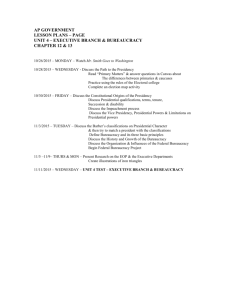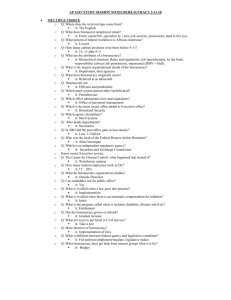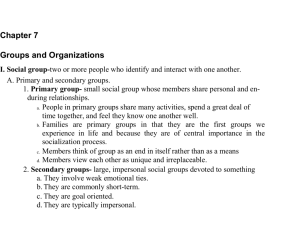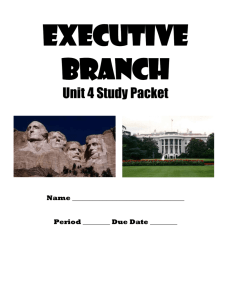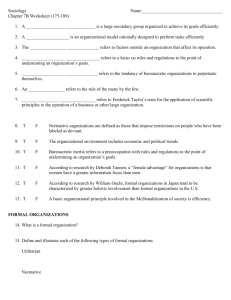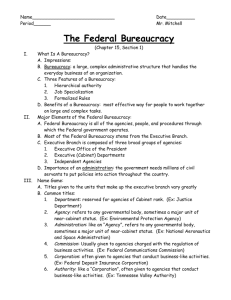AP Government & Politics with Honors Civics and Economics
advertisement
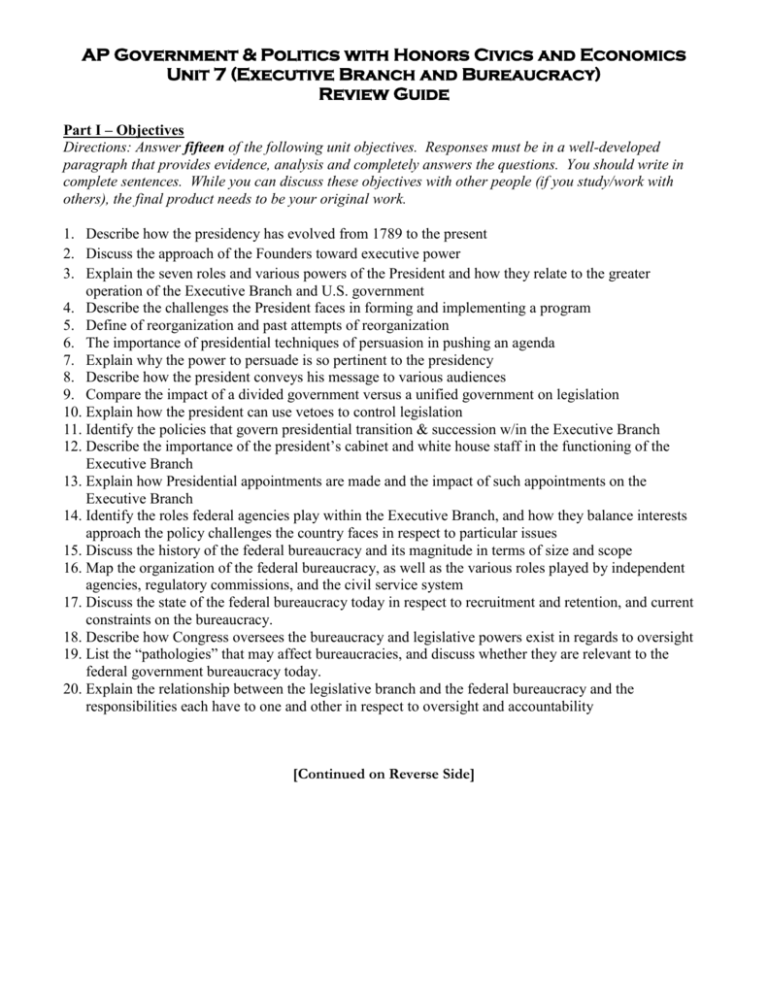
AP Government & Politics with Honors Civics and Economics Unit 7 (Executive Branch and Bureaucracy) Review Guide Part I – Objectives Directions: Answer fifteen of the following unit objectives. Responses must be in a well-developed paragraph that provides evidence, analysis and completely answers the questions. You should write in complete sentences. While you can discuss these objectives with other people (if you study/work with others), the final product needs to be your original work. 1. Describe how the presidency has evolved from 1789 to the present 2. Discuss the approach of the Founders toward executive power 3. Explain the seven roles and various powers of the President and how they relate to the greater operation of the Executive Branch and U.S. government 4. Describe the challenges the President faces in forming and implementing a program 5. Define of reorganization and past attempts of reorganization 6. The importance of presidential techniques of persuasion in pushing an agenda 7. Explain why the power to persuade is so pertinent to the presidency 8. Describe how the president conveys his message to various audiences 9. Compare the impact of a divided government versus a unified government on legislation 10. Explain how the president can use vetoes to control legislation 11. Identify the policies that govern presidential transition & succession w/in the Executive Branch 12. Describe the importance of the president’s cabinet and white house staff in the functioning of the Executive Branch 13. Explain how Presidential appointments are made and the impact of such appointments on the Executive Branch 14. Identify the roles federal agencies play within the Executive Branch, and how they balance interests approach the policy challenges the country faces in respect to particular issues 15. Discuss the history of the federal bureaucracy and its magnitude in terms of size and scope 16. Map the organization of the federal bureaucracy, as well as the various roles played by independent agencies, regulatory commissions, and the civil service system 17. Discuss the state of the federal bureaucracy today in respect to recruitment and retention, and current constraints on the bureaucracy. 18. Describe how Congress oversees the bureaucracy and legislative powers exist in regards to oversight 19. List the “pathologies” that may affect bureaucracies, and discuss whether they are relevant to the federal government bureaucracy today. 20. Explain the relationship between the legislative branch and the federal bureaucracy and the responsibilities each have to one and other in respect to oversight and accountability [Continued on Reverse Side] Part II – Terms/Concepts Directions: Explain the significance of each of these concepts. Your reply should speak NOT to the basic definitions but the impact each concept has on either the executive branch or the bureaucracy. 20th Amendment 22nd Amendment 25th Amendment Accountability Agency capture Ambassador Amnesty Bully pulpit Bureaucracy Bureaucratese Bureaucratic culture Bureaucratic discretion Cabinet (departments) Chief Administrator (Executive) Chief Diplomat (Foreign Policy Maker) Chief of Staff Citizen Advisory Councils Civil Service Clientele groups Commander in Chief Congressional oversight Council of Economic Advisers Cycle effect Discretionary authority Divided government Economic Leader Electoral College Executive Agreement Executive Office of the President Executive Order Executive privilege Federal Register Freedom of Information Act Going public Government Corporation Hatch Act Head of Government Head of State Honeymoon period Impeachment Impoundment of Funds Independent agency Independent regulatory boards & commissions Inherent powers Iron triangles Issue network Lame duck Legislative Leader Legislative liaison Line-item veto National Security Council Neural competence Office of Management and Budget Pardoning power Party Leader Patronage Pendleton Act Pocket veto Power to persuade Presidential style Presidential veto Press Secretary Privacy Act of 1974 Red Tape Regulations Reprieve Senatorial courtesy Signing Statements Solicitor General Spoils system State of the Union Address Succession Sunshine laws Treaty Unified government War Powers Resolution of 1973 Whistle blowers White House Office

